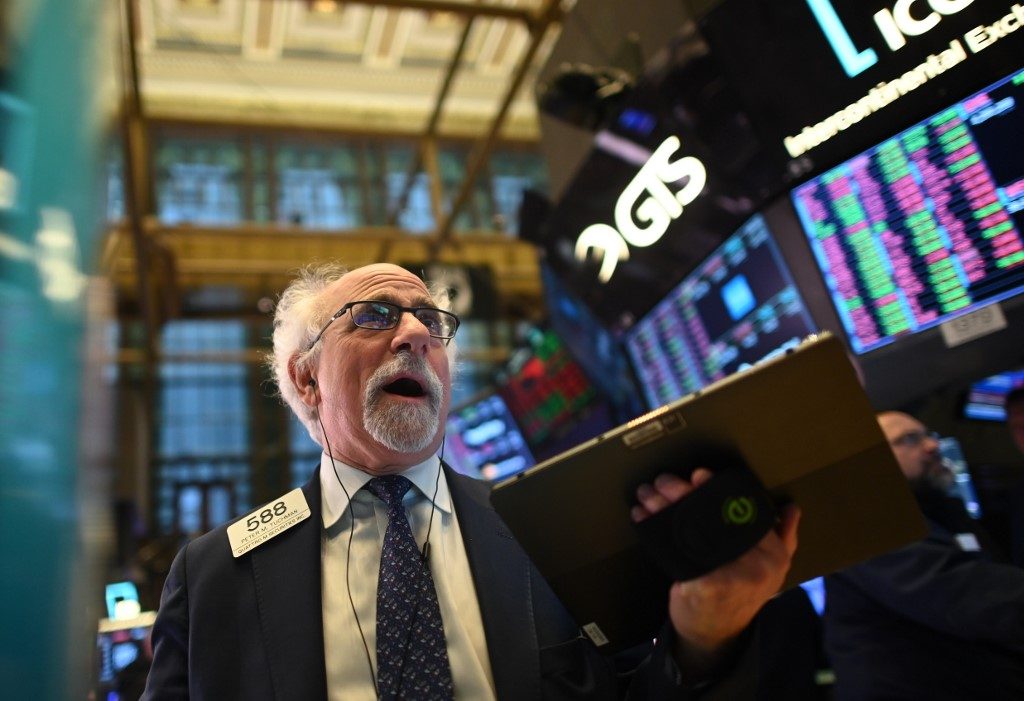SUMMARY
This is AI generated summarization, which may have errors. For context, always refer to the full article.

NEW YORK, USA – Wall Street stocks suffered another rout Tuesday, March 3, while the yield on United States Treasury bonds slid to new all-time lows as investors panned the Federal Reserve’s surprise interest rate cut.
The US central bank slashed its key interest rate by a half point to a range of 1 to 1.25, a bigger cut than usual, saying the move was needed because “coronavirus poses evolving risks to economic activity.”
US stocks initially cheered the Fed announcement, but soon pulled back, resuming a market downturn that pummeled Wall Street and eroding most of the ground won in the big rally on Monday, March 2.
European stocks finished higher, but well below session highs as doubts began to emerge about the Fed’s move, with many commentators arguing that lower interest rates will not be able address the economic dislocations of a spreading coronavirus.
Across the world, 3,155 people have died from the virus.
The outbreak has slowed the Chinese economy considerably and led to a host of other effects, from canceled trade shows, to the cessation of corporate travel at some big companies to school shutdowns in some countries.
The International Monetary Fund and World Bank announced their Spring meetings in April will become a virtual event.
“The Fed’s emergency rate cut was supposed to boost confidence but it may wind up raising fears that the coronavirus is likely to cause a major economic downturn,” economist Joel Naroff said.
Briefing.com analyst Patrick O’Hare said the Fed’s action “could ultimately erode market psychology because when you act that quickly, that aggressively in that short amount of time, it does raise a concern that things are going to get potentially must worse than what was presumed.”
The Dow finished down 2.9%, a loss of nearly 800 points, to 25,017.41.
Dollar weakness
The Fed’s move followed an earlier announcement from G7 finance ministers declaring “they are ready to take actions, including fiscal measures where appropriate, to aid in the response to the virus and support the economy during this phase.”
The Fed was the first top-tier central bank to act, but Australia and Malaysia had already cut borrowing costs earlier in the day.
AvaTrade analyst Naeem Aslam said he suspected the Bank of Canada would follow suit at its policy meeting on Wednesday, March 4.
Following the Fed’s move, the yield on the 10-year US Treasury bond slid below 1% for the first time. US government debt serves as a refuge that tends to attract buyers during periods of uncertainty.
The dollar also weakened against the euro and other leading currencies.
“The problem for the Fed and other central bankers is that rate cuts cannot solve a health crisis,” said Kathy Lien of BK Asset Management.
“While the Fed may have hoped that easing early and aggressively would reassure investors, it did the complete opposite by highlighting the extent of the central bank’s concern.”
Lien said the Bank of Japan and Bank of England have both signaled more stimulus ahead, but adding that “we haven’t heard much from the European Central Bank.” – Rappler.com
Add a comment
How does this make you feel?
There are no comments yet. Add your comment to start the conversation.